#community cats
Text
I've been seeing a lot of Discourse around outdoor cats that talks past one of the biggest problems addressing community cats/outdoor working cats so I thought I'd chime in with my two cents.
Many arguments I see just... don't think about the cats at all? Or don't consider the logistics of actually addressing the feral cat problem in a humane way. It's always about how outdoor cats shouldn't be outdoors, which is neither realistic nor helpful.
I used to volunteer at an municipal animal shelter in the USA that had a TNR program (Trap, Neuter, Return) and also adopted out community cats to local farms and businesses. Here's my side of the story.
"Your cat doesn't need to be outside" -- Yes, correct. Your domesticated (non-feral) house cat does not need to go outside at all. They can have a fully actualized life safely indoors. When I see this argument, proponents of indoor only cats are correct in most or all their arguments regarding this.
"Outdoor cats are the largest invasive species in the world, and decimate bird populations." -- This is also correct, and part of the reason why you can help by bringing your house cat indoors. Cats are the largest invasive species. Spay and Neuter your cats, bring them inside, and socialize them so they don't become feral.
"TNR doesn't work." -- False. Whether we like it or not, feral cats exist. We have two methods by which we can address the feral cat population -- decimating them (humanely euthanizing the whole colony) or TNR. For a long time, euthanasia was the preferred way to address the feral cat problem. Afterall, if the cats aren't there, doesn't that save the local wildlife population?
Except that we found, studying these colonies, that when a colony is wiped out, the cats of another colony will spread into their territory and continue to have kittens and the population of feral cats is neither controlled nor diminished.
Hence, TNR. What we found performing TNR on cat colonies was that this controlled the population of the colonies, allowing them to stay in their territory, which kept other colonies from spreading (especially colonies we hadn't performed TNR on yet). We at the shelter felt this was the most humane way to control the feral cat population and safely deflate their existence without dealing with the population blooms that euthanasia caused.
"What about kittens?" -- Kittens from these colonies were brought into the shelter, socialized, and fostered out until they could be adopted. Some of these semi-feral kittens needed special homes to be adopted into, but this was the best quality of life for these cats.
"What about cats that get missed during TNR?" -- We would return to the colony several times over a period of several years to perform TNR on the same colony. We mark cats that have been neutered by clipping their ear (this is done humanely, but is the most reliable way to tell if a cat has been neutered so the poor thing doesn't have to have surgery 3-4 times in their life). Also, during the TNR process the cats would be vaccinated to ensure disease did not spread from the colony (i.e. rabies). Still, even getting 60% of the colony TNR'd would dramatically reduce the number of kittens being added to the colony each year. This controlled the population by allowing the territory to naturally deflate in size over time, buying us time to address the larger feral cat problem.
"What if the colony was in an unsafe location?" -- There were two ways we addressed unsafe colony locations -- remember, we know that when the colony is removed, a new colony will move into its place, so we tried not to move the colony unless we really felt the cats or the public was unsafe -- one was to move the whole colony to a new location. Preferably someplace like a warehouse where we have an agreement with the owners of the warehouse. Some of the cats were even relocated to shelter grounds as our community cats. If the colony was small enough we would bring them into our Feral Cats room and adopt them out as community cats.
"What is a community cat?" -- The way the program worked, was that anyone who needed a working cat could apply to the program. These were often rural farmers or businesses with warehouses that needed rodent protection. We trained the farmers and businesses on how to acclimatize the cats to their new home, and as part of the agreement, they had to care for the cats (veterinary care, vaccinations, food and water). This gave businesses and farms an alternative to expensive and environmentally unfriendly rodent control, and also gave these feral cats good places to live out their natural lives.
"Can't you just adopt out feral cats?" -- No. Cats that have not been socialized around humans as kittens, or who have several generations of feral cat in them could not interact with humans in a way that did not cause them undue stress. This was not a humane way to handle feral cats. However, when a cat was brought into the feral cat room, they would be monitored for up to a week. If the cat displayed signs of being semi-social or fully social (hanging out outside of their den, allowing staff to pet them, showing interest in staff in the room), then we would either move the cat into the adoption room or place them in foster to be socialized before adoption. Feral cats who displayed signs of being able to live full and healthy lives with human companions were NOT adopted out as community cats. We also observed this behavior during TNRs and would do the same for those cats too.
"But aren't cats bad hunters?" -- Compared to other species, cats are not the most effective form of rodent control. This is true. However, you have to understand that feral cats exist. There is no "undo" button we can push to stop them from existing. We have to deal with the problem we have right now, which is to safely and humanely decrease the number of feral cats in our communities. And yes, we do that by using cats as rodent control in the community.
"What can I do?" -- Stop saying community cats shouldn't exist. That's not helpful and doesn't solve the problem we have. Bring your cat indoors. Spay and neuter your cats. Adopt from shelters. Volunteer with a TNR team. Support TNR efforts in your community. Recognize that those of us actively dealing with the community/feral problem are trying to do what is in the best interest of our communities and the animals we love. We aren't sitting over here saying these cats should exist -- a feral cat will not have the same quality of life as one that is indoors with a family -- but we have to address the problem in practical terms. We don't have the moral high ground to just do nothing while pontificating solutions that have no basis in actuality.
And yes, it's okay to celebrate community cats. If your local farm has a couple of working cats, that means that farm is helping participate in the safe deflation of the feral cat population. Don't shame a farm or business for using community cats. We're all doing the best we can to solve the problem that we have.
6K notes
·
View notes
Text

necos
88 notes
·
View notes
Text

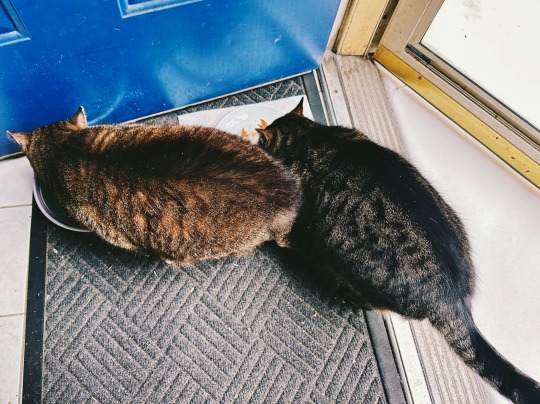
13 notes
·
View notes
Text

Today I gave my community cat a box. Got scolded by a resident nearby, so I removed the box and apologised. They slammed their door and gate, spooking me and the poor cat 🥲
I wish I had more monetary ability to better protect and care for the animals. (And that people would be better.)
#artists on tumblr#cats of tumblr#cute cats#catsofinstagram#kitty#community cats#singapore#robin rambles
10 notes
·
View notes
Text
My local community colony of 13 cats desperately needs help! Each procedure costs $70. 🐈🐈⬛
#tnr#gofundme#go fund me#donate#charity#cats#cat lovers#help#taylor swift#swifties#taylornation#stop overpopulation#helpinghands#save lives#cat lover#community cats
4 notes
·
View notes
Text
Trying to mentally prepare to talk with my neighbor tomorrow. Tonight right after I had clocked into work to do some OT(yes I work from home) she knocked on my door to tell me to stop feeding some of our local ferals. Because one tends to get onto her patio and she threatened to shoot him next time me she sees him.
Her argument is that if I stop feeding them they’ll go somewhere else and won’t get on her patio. I didn’t have time to argue with her because again I had just clocked in, but here’s the thing. My feeding the ferals is allowed by our HOA board. We have rules and guidelines for it and a budget that comes from HOA feeds for food and TNR. She can call our property management to come spray her patio with a deterrent to keep animals away.
I also checked the laws and it is in fact illegal for her to harm/kill these animals just because they’re on her patio(defense against prosecution requires them to be a threat to her, or livestock/crops. Which she doesn’t have because it’s just a small patio)
Afterwards the whole thing I immediately called and told the leader of our cat team(who is also on the HOA board) She’s going to try and get property management to also communicate with my neighbor(and that led me about the spray) But I still need to try and talk with my neighbor as the property management won’t be in till Monday.
For those that came this far here’s a pic of my breakfast club(the one she specifically threatened is the black one)
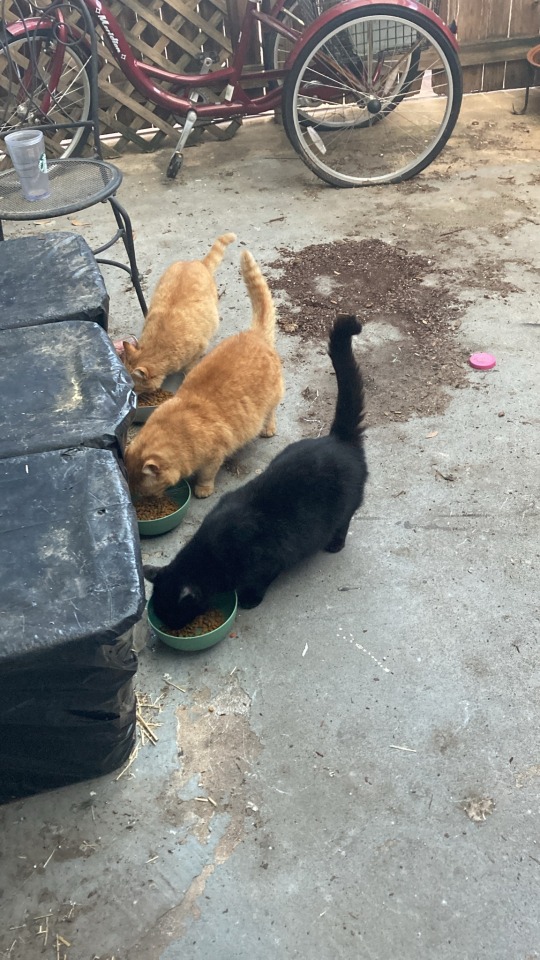
2 notes
·
View notes
Text
2024 Scenic Cat Calendars from Kotor Kitties $16
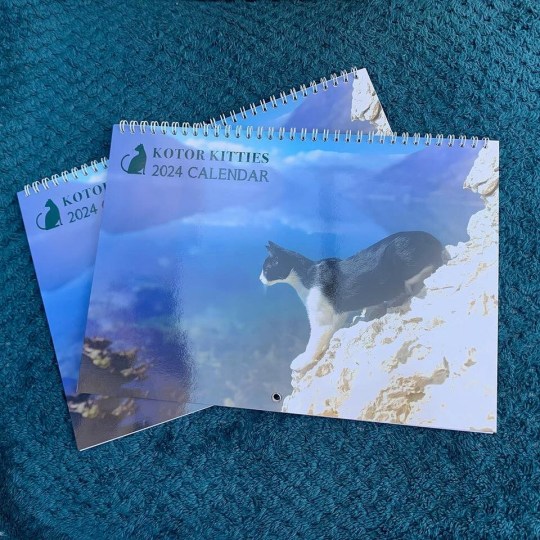
Kotor Kitties is a nonprofit (501(c)(3) that spays and neuters the community cats in Montenegro--a tiny, very poor country that was once part of former Yugoslavia. We have spay-neutered 10,000+ cats in just 5 years, and we're gradually changing the culture to embrace spay-neuter and cats as pets, and to better tolerate community cats. We’re an all-volunteer organization, so most of our expenses are for spay-neuter surgeries ($42 female, $27 male), with some additional medical expenses like vaccine for kittens, eye removal, and tail or leg amputation.
Kotor is a well-known scenic destination for cat lovers, so each year we produce a calendar featuring 12 months of beautiful cats in gorgeous scenery. It's like taking a mini-vacation every month! We're about to print our last run of calendars locally, and I realized some of the neighborhood cat aficionados might appreciate these. And of course they make great gifts for any cat-lovers in your life!
Printing costs for the calendars were donated, so the entire price of the calendar (except postage) will go to spay-neuter funding.
You can pay via PayPal or Venmo, at email address [email protected].
REMEMBER TO INCLUDE THE MAILING ADDRESS(ES) YOU WANT THEM SENT TO!Please check out our website, at https://www.kotorkitties.org, or find us on social media!

#catsoftheworld#cats of tumblr#black cats#cats#catsofinstagram#community cats#facebookcats#cats of the internet
2 notes
·
View notes
Text
tw animal death
please keep your cats inside. i found a dead kitten on the road on Thanksgiving that had likely just died within 15 minutes of me finding it. i havent been able to get the city or property management to remove the body so I've passed it every day since. I don't think it belonged to anyone but this city is so pro TNR I'm not fucking surprised. I hate TNR programs so much and hate how deceptively cruel the practice is.
#community cats#gab gabs#before anyone gets on my cas it was in a parking lot and people dont drive fast here.#poor baby had fleas too#it just is so bizarre to me that people think its good and ok to have lol.#Literally why have a cat if you're going to abandon it outside
5 notes
·
View notes
Text
Why is it every time i think my group of strays is dwindling another one shows up? I literally only have two left (of thirty) as my Grey boy went and found himself a home and the siblings (Socks and Trapshy) are getting up there in age. And I ‘m at work and one of my coworkers comes in to ask if the cat at the door is one of mine. Says it’s a dilute calico crying and trying to get in. My thoughts are like Shy’s definitely not at the door so nope. And sure enough nope, this little girl isn’t even a year old probably and extremely friendly she let me pick her up no issue.
Unfortunately I’ve got four cats and a high prey drive not cat friendly dog at home so i put her at my groups feeding spot (the siblings were not pleased with the interloper). I’ll see if anyone’s missing her in the morning though more than likely she’s been dumped.
2 notes
·
View notes
Text
Cream Puff Memories
Below some pics of Cream Puff, may he rest in peace.
He was originally trapped, neutered, vaccinated and released in 2009.

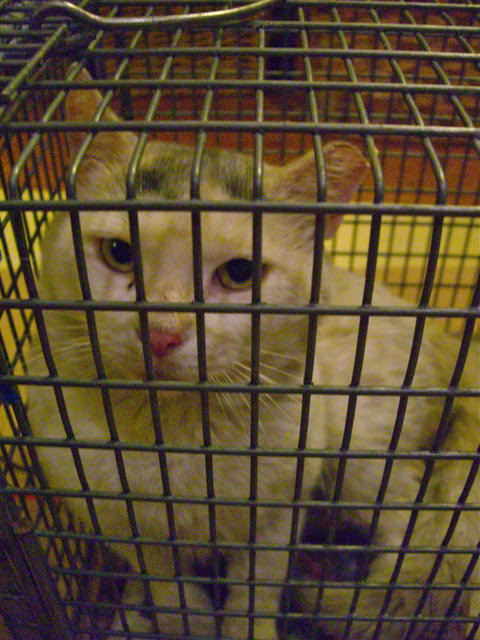
Once [2016?] had to come inside for a winter while a leg abscess healed.

He was always much happier outside on his own.


And outside especially with his best buddy Harley, who pre-deceased him in 2017




They were a pair of country gentlemen living on the @morrisjumelmansion grounds.
We hope they are together now.
2 notes
·
View notes
Text

🐈Feral Cat Day 2022🐈
The BFU Curators Committee happily celebrates Feral Cat day, originated by Alley Cat Allies!
Today raises important awareness for feral cats around the globe and promotes life saving TNR programs
Give your local furry friends a respectful wave and leave out some water and treats tonight!
Signed,
The BFU Curators Committee
🐾[ Carrd || Mod Intros || Twitter II Insta ]🪶

#feral cats#community cats#tnr#trap neuter release#animal charity zine#zine#artists help ukraine#charity zine#animals
2 notes
·
View notes
Text
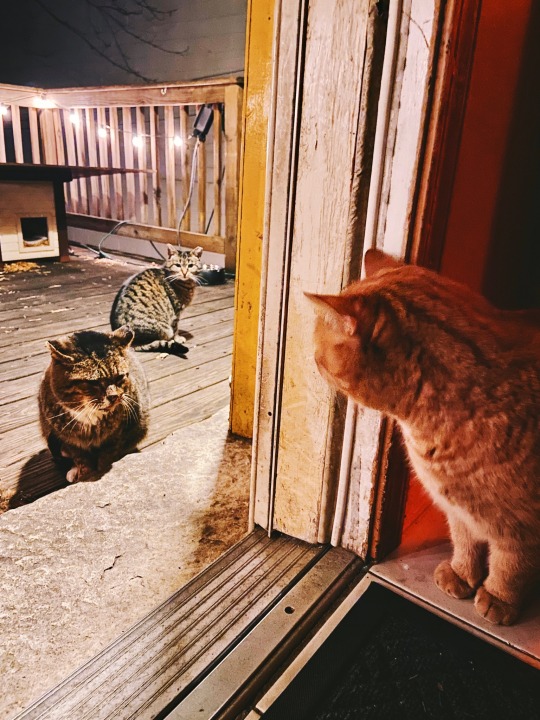
295 notes
·
View notes
Text
TNRing cats is hard work but it is very fulfilling.
2 notes
·
View notes
Text
TNR stray cats

Sometimes, the most you can do is TNR strays, and leave out the cheapest kibble you can afford with a bowl of water. It still helps, A LOT.
Contact your local Feral Cat Coalition or Humane Society and help reduce the stray population. I have had stray cats steal my heart and/or pass away. But I always TNR them and feed animals in need.
0 notes
Text
Top 10 Winter Weather Tips for Community Cats

It’s getting cold out there! As temperatures drop, it’s important to know: Cats have always lived outdoors and thrived in all varieties of locations, weather conditions, and climates. They are well adapted to their environments and know where to find food and shelter from the elements.
However, there are many ways you can provide some extra support. Following best practices to care for community cats can go a long way toward ensuring their comfort and safety outdoors in the coldest months.
DO NOT bring cats or kittens to animal shelters.
Many shelters lack humane, nonlethal policies and programs. Bringing cats and kittens to shelters where they could be killed is not in their best interest—even when the weather is cold.
Unless there is illness or injury–in which case, consult a veterinarian–allowing cats to remain outdoors is the best way to protect them. There are multiple steps you can take to keep cats warm and safe in their outdoor homes where they belong.
Alley Cat Allies is here to provide lifesaving information! These are our Top 10 Winter Weather Tips for Cats:
Provide outdoor shelters for community cats
Whether you want to build or buy (building cat shelters is a great family or community activity!), we have shelter ideas, blueprints, and suggestions to get you started.
Insulate outdoor cat shelters with STRAW, not HAY
Straw repels moisture while hay does not, and cats can burrow into the straw to stay dry and warm. Be sure to keep adding straw throughout the season.
Use the right bowl
A heated bowl will prevent cats’ water and wet food from freezing. You can also utilize ceramic or plastic bowls that are deep rather than wide and place them in a sunny spot.
Build a feeding station
A feeding station that keeps bowls insulated and off the ground will also go a long way. We have some feeding station options you can consider.
Provide fresh food and water
Continue to change out food and water rather than letting leftovers freeze. Another tip: Increase your typical meal portions for cats during the winter. The extra food will help give cats the energy they need to stay warm. Canned or wet food takes the least amount of energy to digest, meaning more energy can be spent staying warm.
Prepare cats’ outdoor homes for snowstorms
In the event a major weather event like snow accumulation is in the forecast, give cats extra food and water in case you can’t get to the cats for a couple days. Clear snow from the entrances of cats’ shelters after storms so they don’t get snowed in.
Don’t use salt or chemical melting products or antifreeze
These products can be lethal when licked off paws or ingested from melting puddles. Antifreeze in particular can be attractive to cats and is extremely toxic.
Always check under the hood of your car for cats
Sometimes, cats will nap under cars or even crawl into them to curl up near a warm engine. Before you turn on your car, look under your it to make sure the coast is clear, and then pop the hood to make sure a cat isn’t resting there.
Do TNR only if conditions are not dangerous
If it’s too cold outside for you, then it’s probably too cold for cats to be in traps, exposed to the elements, for extended periods of time.
TNR in the winter is fine—just watch traps at all times
Do not walk away and come back to check traps when doing TNR in winter. Keep an eye on traps at all times so you can move the cats into a temperature-controlled vehicle or building immediately after the trap door closes.
Learn more Cold Weather Tips for Cats.
Learn how to safely practice TNR in Winter.
Content source: https://www.alleycat.org/top-10-winter-weather-tips-for-community-cats/
#Community Cats#Caring For Community Cats#Community Cat Programs#Outdoor cat protection#Cold weather cat feeding#Winterizing cat colonies#Community cat winter essentials
0 notes